Developed 19th century Invented 1900s | ||
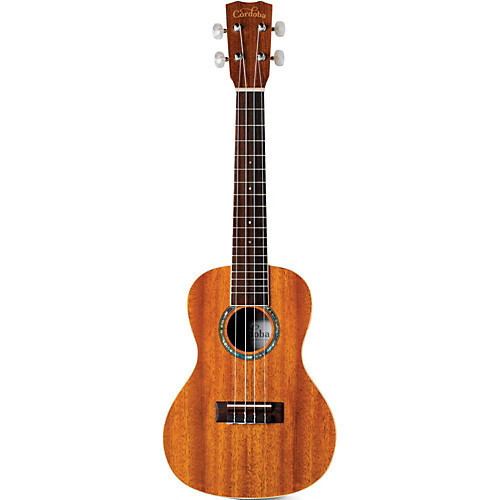 | ||
Hornbostel–Sachs classification 321.322(Composite chordophone) | ||
How to play ukulele tutorial difference between guitar ukulele and guitarlele
The ukulele (/juːkəˈleɪliː/ yoo-kə-LAY-lee, from Hawaiian: ʻukulele [ˈʔukuˈlɛlɛ] (oo-koo-leh-leh); variant: ukelele), sometimes abbreviated to uke, is a member of the lute family of instruments; it generally employs four nylon or gut strings or four courses of strings. Some strings may be paired in courses, giving the instrument a total of six or eight strings.
Contents
- How to play ukulele tutorial difference between guitar ukulele and guitarlele
- History
- Canada
- Japan
- United Kingdom
- Pre World War II
- Post World War II
- Post 1990 revival
- Construction
- Types and sizes
- Tuning
- Related instruments
- References
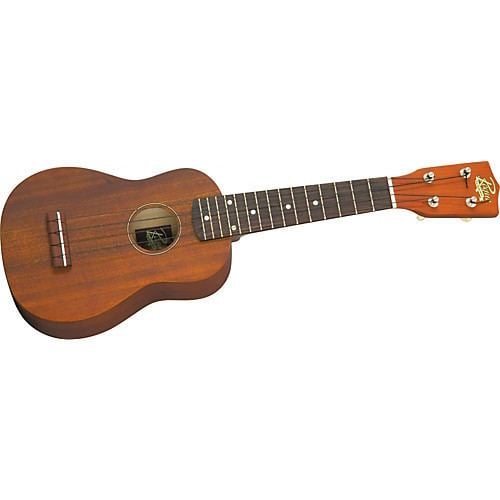
The ukulele originated in the 19th century as a Hawaiian adaptation of the Portuguese machete, a small guitar-like instrument, which was introduced to Hawaii by Portuguese immigrants, many from Madeira and the Azores. It gained great popularity elsewhere in the United States during the early 20th century and from there spread internationally.
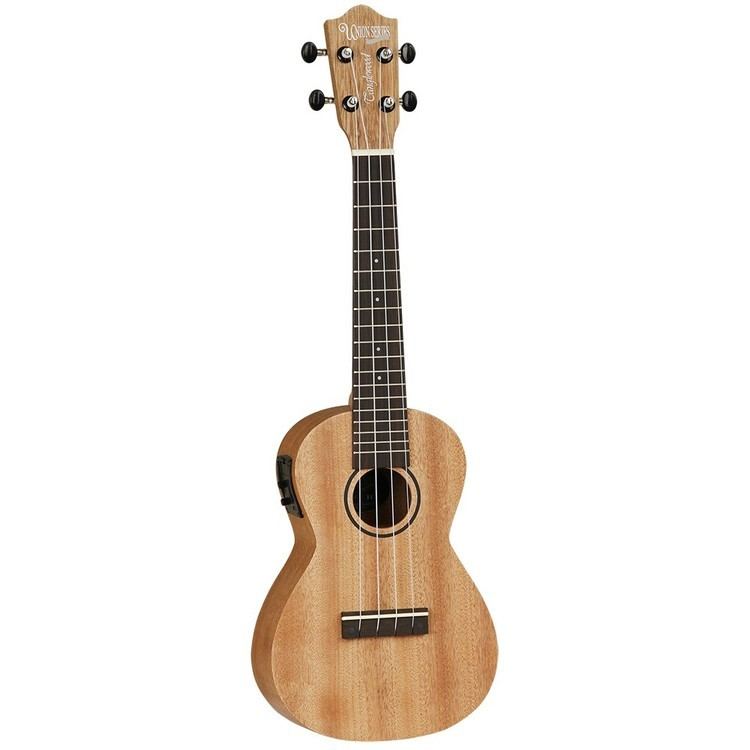
The tone and volume of the instrument vary with size and construction. Ukuleles commonly come in four sizes: soprano, concert, tenor, and baritone.
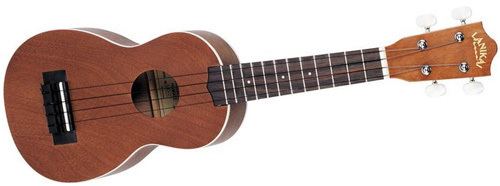
History
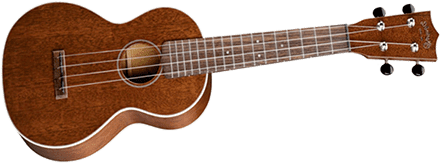
The ukulele is commonly associated with music from Hawaii where the name roughly translates as "jumping flea", perhaps because of the movement of the player's fingers. Legend attributes it to the nickname of the Englishman Edward William Purvis, one of King Kalākaua's officers, because of his small size, fidgety manner, and playing expertise. According to Queen Liliʻuokalani, the last Hawaiian monarch, the name means "the gift that came here", from the Hawaiian words uku (gift or reward) and lele (to come).
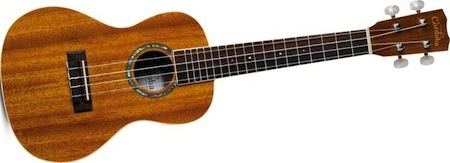
Developed in the 1880s, the ukulele is based on several small guitar-like instruments of Portuguese origin, the machete, the cavaquinho, the timple and the rajão, introduced to the Hawaiian Islands by Portuguese immigrants from Madeira and Cape Verde. Three immigrants in particular, Madeiran cabinet makers Manuel Nunes, José do Espírito Santo, and Augusto Dias, are generally credited as the first ukulele makers. Two weeks after they disembarked from the SS Ravenscrag in late August 1879, the Hawaiian Gazette reported that "Madeira Islanders recently arrived here, have been delighting the people with nightly street concerts."
One of the most important factors in establishing the ukulele in Hawaiian music and culture was the ardent support and promotion of the instrument by King Kalākaua. A patron of the arts, he incorporated it into performances at royal gatherings.
Canada
In the 1960s, educator J. Chalmers Doane dramatically changed school music programs across Canada, using the ukulele as an inexpensive and practical teaching instrument to foster musical literacy in the classroom. 50,000 schoolchildren and adults learned ukulele through the Doane program at its peak. Today, a revised program created by James Hill and J. Chalmers Doane continues to be a staple of music education in Canada.
Japan
The ukulele came to Japan in 1929 after Hawaiian-born Yukihiko Haida returned to the country upon his father's death and introduced the instrument. Haida and his brother Katsuhiko formed the Moana Glee Club, enjoying rapid success in an environment of growing enthusiasm for Western popular music, particularly Hawaiian and jazz. During World War II, authorities banned most Western music, but fans and players kept it alive in secret, and it resumed popularity after the war. In 1959, Haida founded the Nihon Ukulele Association. Today, Japan is considered a second home for Hawaiian musicians and ukulele virtuosos.
United Kingdom
The singer and comedian George Formby was perhaps the UK's most famous ukulele player, though he often played a banjolele, a hybrid instrument consisting of an extended ukulele neck with a banjo resonator body. Demand surged in the new century because of its relative simplicity and portability. Another famous British artist was Tony Award winner Tessie O'Shea, who appeared in numerous movies and stage shows, and was twice on The Ed Sullivan Show, including the night The Beatles debuted in 1964. Today the ukulele's popularity in Britain continues to grow with the Ukulele Orchestra of Great Britain touring globally, the George Formby Society (GFS - established in 1961) holding regular conventions, the establishment of dedicated ukulele groups and festivals across the UK, Paul McCartney's 2002 tribute tour to George Harrison (a huge fan of the instrument and a member of the GFS), and many British ukulele enthusiasts sharing their music internationally on YouTube.
Pre World War II
The ukulele was popularized for a stateside audience during the Panama Pacific International Exposition, held from spring to fall of 1915 in San Francisco. The Hawaiian Pavilion featured a guitar and ukulele ensemble, George E. K. Awai and his Royal Hawaiian Quartet, along with ukulele maker and player Jonah Kumalae. The popularity of the ensemble with visitors launched a fad for Hawaiian-themed songs among Tin Pan Alley songwriters. The ensemble also introduced both the lap steel guitar and the ukulele into U.S. mainland popular music, where it was taken up by vaudeville performers such as Roy Smeck and Cliff "Ukulele Ike" Edwards. On April 15, 1923 at the Rivoli Theater in New York City, Smeck appeared, playing the ukulele, in Stringed Harmony, a short film made in the DeForest Phonofilm sound-on-film process. On August 6, 1926, Smeck appeared playing the ukulele in a short film His Pastimes, made in the Vitaphone sound-on-disc process, shown with the feature film Don Juan starring John Barrymore.
The ukulele soon became an icon of the Jazz Age. Like guitar, basic ukulele skills can be learned fairly easily, and this highly portable, relatively inexpensive instrument was popular with amateur players throughout the 1920s, as evidenced by the introduction of uke chord tablature into the published sheet music for popular songs of the time, (a role that would be supplanted by the guitar in the early years of rock and roll). A number of mainland-based stringed-instrument manufacturers, among them Regal, Harmony, and especially Martin added ukulele, banjolele, and tiple lines to their production to take advantage of the demand.
The ukulele also made inroads into early country music or old-time music parallel to the then popular mandolin. It was played by Jimmie Rodgers and Ernest V. Stoneman, as well as by early string bands, including Cowan Powers and his Family Band, Da Costa Woltz's Southern Broadcasters, Walter Smith and Friends, The Blankenship Family, The Hillbillies, and The Hilltop Singers.
Post World War II
From the late 1940s to the late 1960s, plastics manufacturer Mario Maccaferri turned out about 9 million inexpensive ukuleles. The ukulele continued to be popular, appearing on many jazz songs throughout the 1950s, 1960s, and 1970s. Much of the instrument's popularity (particularly the baritone size) was cultivated via The Arthur Godfrey Show on television. Singer-musician Tiny Tim became closely associated with the instrument after playing it on his 1968 hit "Tiptoe Through the Tulips."
Post 1990 revival
After the 1960s, the ukulele declined in popularity until the late 1990s, when interest in the instrument reappeared. During the 1990s, new manufacturers began producing ukuleles and a new generation of musicians took up the instrument. Jim Beloff set out to promote the instrument in the early 1990s and created over two dozen ukulele music books featuring modern music as well as classic ukulele pieces.
All-time best selling Hawaiian musician Israel Kamakawiwo'ole helped re-popularise the instrument, in particular with his 1993 reggae-rhythmed medley of "Over the Rainbow" and "What a Wonderful World," used in films, television programs, and commercials. The song reached no. 12 on Billboard's Hot Digital Tracks chart the week of January 31, 2004 (for the survey week ending January 18, 2004).
The creation of YouTube was a large influence on the popularity of the ukulele. One of the first videos to go viral was Jake Shimabukuro's ukulele rendition of George Harrison's "While My Guitar Gently Weeps" on YouTube. The video quickly went viral, and as of December 2016, had received over 15 million views.
Construction
Ukuleles are generally made of wood, though variants have been composed partially or entirely of plastic or other materials. Cheaper ukuleles are generally made from plywood or laminate woods, in some cases with a soundboard of a tonewood such as spruce. More expensive ukuleles are made of solid hardwoods such as mahogany. The traditionally preferred wood for ukuleles is acacia koa.
Typically, ukuleles have a figure-eight body shape similar to that of a small acoustic guitar. They are also often seen in non-standard shapes, such as cutaway shape and an oval, usually called a "pineapple" ukulele, invented by the Kamaka Ukulele company, or a boat-paddle shape, and occasionally a square shape, often made out of an old wooden cigar box.
These instruments usually have four strings; some strings may be paired in courses, giving the instrument a total of six or eight strings (primarily for greater strumming volume.) The strings themselves were originally made of catgut. Modern ukuleles use nylon polymer strings, with many variations in the material, such as fluorocarbon, aluminum (as winding on lower pitched strings), and Nylgut.
Instruments with 6 or 8 strings in four courses are often called taropatches, or taropatch ukuleles. They were once common in a concert size, but now the tenor size is more common for six-string taropatch ukuleles. The six string, four course version, has two single and two double courses, and is sometimes called a Lili'u, though this name also applies to the eight-string version. Eight-string baritone taropatches exist, and, more recently, 5-string tenors have been made.
Types and sizes
Common types of ukuleles include soprano (standard ukulele), concert, tenor, and baritone. Less common are the sopranino (also called piccolo, bambino, or "pocket uke"), bass, and contrabass ukuleles. The soprano, often called "standard" in Hawaii, is the second-smallest and was the original size. The concert size was developed in the 1920s as an enhanced soprano, slightly larger and louder with a deeper tone. Shortly thereafter, the tenor was created, having more volume and deeper bass tone. The baritone (resembling a smaller tenor guitar) was created in the 1940s, and the contrabass and bass are very recent innovations (2010 and 2014, respectively).
Size and popular tunings of standard ukulele types:
Range of notes of standard ukulele types:
Note that range varies with the tuning and size of the instruments. The examples shown in the chart reflect the range of each instrument from the lowest standard tuning, to the highest fret in the highest standard tuning.
Tuning
The (currently) most popular tuning for the standard or soprano ukulele is C6 tuning: G4–C4–E4–A4. The G string is tuned an octave higher than might be expected. This is known as a "reentrant tuning"; it enables uniquely close-harmony chording. A few players prefer "low G" tuning, with the G in sequence an octave lower: G3–C4–E4–A4, the same relationship as the top 4 strings (DGBE) of a guitar in standard tuning.
Another common tuning for the soprano ukulele is the higher string-tension D6 tuning (or simply D tuning), A4–D4–F♯4–B4, one step higher than the G4–C4–E4–A4 tuning. Once considered standard, this tuning was commonly used during the Hawaiian music boom of the early 20th century, and is often seen in sheet music from this period, as well as in many method books through the 1980s. D6 tuning is said by some to bring out a sweeter tone in some ukuleles, generally smaller ones. D6 tuning with a low fourth string, A3–D4–F♯4–B4, is sometimes called "Canadian tuning" after its use in the Canadian school system, mostly on concert or tenor ukuleles, and extensive use by James Hill and J. Chalmers Doane.
Whether C6 or D6 tuning should be the "standard" tuning is a matter of long and ongoing debate. There are historic and popular ukulele methods that have used each.
The "higher pitched" instruments (sopranino, soprano, concert) most often employ reentrant tuning, while the "lower pitched" instruments (baritone, bass, and often tenor) usually employ linear tuning, where the strings are tuned from low to high pitch across the instrument. For example, baritone is usually tuned to D3–G3–B3–E4, (like the highest four strings of a standard 6-string guitar.) There are, however, exceptions, with some players preferring to place the tenor (and even, rarely, the baritone) into re-entrant tuning as well.
Hawaiian ukuleles may also be tuned to open tunings, similar to the Hawaiian slack key style.
Related instruments
Ukulele varieties include hybrid instruments such as the guitalele (also called guitarlele), banjo ukulele (also called banjolele), harp ukulele, and lap steel ukulele. There is an electrically amplified version, the electric ukulele. The resonator ukulele produces sound by one or more spun aluminum cones (resonators) instead of the wooden soundboard, giving it a distinct and louder tone. The Tahitian ukulele, another variant, is usually carved from a single piece of wood, and does not have a hollow soundbox.
Close cousins of the ukulele include the Portuguese forerunners, the cavaquinho (also commonly known as machete or braguinha) and the slightly larger rajão. Other relatives include, the Venezuelan cuatro, the Colombian tiple, the timple of the Canary Islands, the Spanish vihuela, the Mexican requinto jarocho, and the Andean charango traditionally made of an armadillo shell. In Indonesia, a similar Portuguese-inspired instrument is the kroncong.
